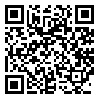Volume 8, Issue 1 (9-2008)
Iranian Journal of Medical Education 2008, 8(1): 23-31 |
Back to browse issues page
, yamani@edc.mui.ac.ir
Abstract: (19753 Views)
Introduction: Educational goals of CPR (CardioPulmonary Resuscitation) training are not fully achieved by traditional methods. The aim of this study was to present a new method for teaching CPR to medical students and also to compare the effect of this new method on knowledge and skills of medical students with current CPR training method. Methods: In this quasi-experimental study, Forty 4th year medical students were divided into two experiment and control groups randomly. The control group passed the current method of CPR training and the experiment group participated in a 3 day workshop (first day: theoretical session, second day: group work and practice on model, third day: confrontation to real environment). The test for assessing knowledge and skills was held before and after the workshop. Then the mean scores were compared using independent t-test and paired t-test Results: Comparing the mean scores of pre-test and post-test showed a significant difference in both knowledge and skills of the experiment group. The mean of the difference between pre-test and post-test scores of the two groups in theoretical and practical exams were also compared which revealed a significant difference Results: Considering the higher mean of difference between pre and post tests in the experiment group, it seems that educational intervention enhanced the knowledge and proficiency of medical students in performing CPR. Some reasons could be successive theoretical and practical sessions, devoting much more time to practice, confrontation with real environment, and education through group work.
Type of Study: Original research article |
Received: 2008/12/2 | Accepted: 2011/08/7 | Published: 2008/09/15 | ePublished: 2008/09/15
Received: 2008/12/2 | Accepted: 2011/08/7 | Published: 2008/09/15 | ePublished: 2008/09/15
| Rights and permissions | |
 |
This work is licensed under a Creative Commons Attribution-NonCommercial 4.0 International License. |


